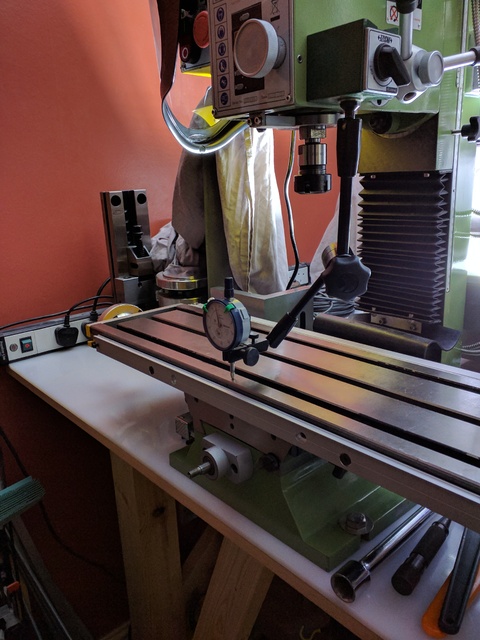
The encoder was not parallel to the table, so now I'm checking the table moves parallel to the head.
It doesn't, so now I'm checking the other side. After much confusion I was able to improve the parallelism by cleaning the slideways. It's still not brilliant, but good enough for now.
Using a parallel and a set of feeler gauges to decide how thick the spacer must be to keep the read head vertical. Cheap feeler gauges also make good shims, just in case I make the spacer too thin.
6.5mm looks good to me.
Making the spacer from a piece of 100mm×20mm×10mm aluminium.
A brief digression to try out a new method for removing tool marks. This is a 6.5mm thick piece of laminated glass and a strip of 600 grit silicon carbide paper. If it looks promising I intend to buy a cheap/used cast iron surface plate to use in place of the glass, and attach entire sheets of paper with adhesive.
It does work, but I think I need to start with a coarser paper. The next size down (up?) in the pack is 220 grit, which seems too coarse, but we'll see. Some means of keeping the part moving parallel wouldn't hurt either.
I guess I'll have to settle for a 6.504mm spacer.
The read head has M5 threaded holes, but M5 screws are too big for the recesses.
So I'm going to use M4. These screws are going through clearance holes in the spacer to check the gap between the spacer and the scale.
Unfortunately the cable strain relief means I'm going to have to offset the read head by 12mm or so to prevent it blocking the right hand lock screw.